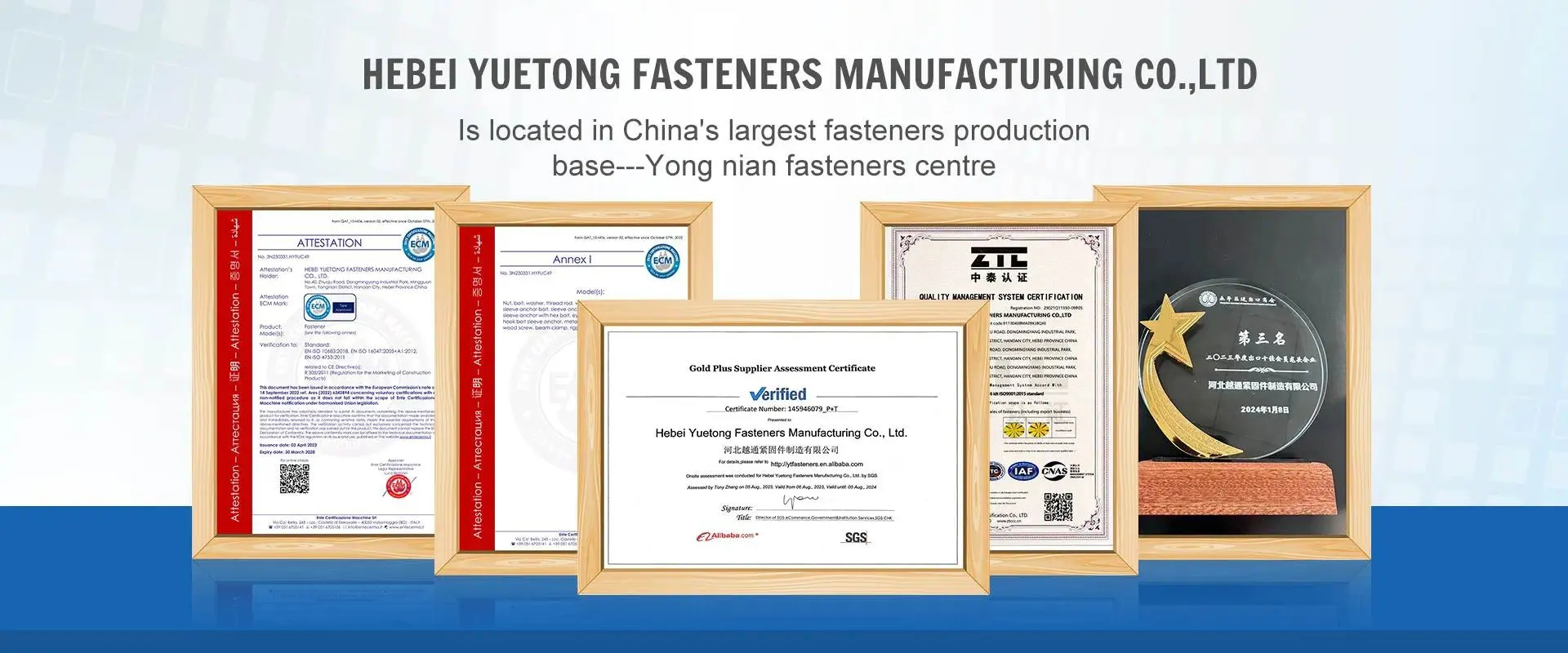11월 . 22, 2024 00:14 Back to list
hardened washers
Understanding Hardened Washers Essential Components in Engineering
Hardened washers are specialized components used in various engineering and mechanical applications to enhance the performance of assemblies and support structures. These washers are typically made from high-strength materials that have been treated to improve their hardness, ensuring they can withstand greater loads and resist wear and deformation. In this article, we will explore the significance of hardened washers, their applications, manufacturing processes, and the benefits they offer.
What Are Hardened Washers?
Hardened washers are flat, disc-shaped objects that serve several purposes, such as distributing load, reducing friction, and preventing damage to surfaces. They are usually placed between nuts and the surface of a material to create a stable connection. The “hardened” aspect refers to the increased hardness achieved through processes such as heat treatment or cold working. This hardness is measured on the Rockwell scale, making it a crucial factor in determining their suitability for specific engineering applications.
Manufacturing Processes
The production of hardened washers generally involves several steps. Initially, raw materials like steel, stainless steel, or other alloys are selected based on the desired properties of the washer. Common manufacturing techniques include stamping, forging, and machining, with stamping being the most prevalent method for mass production. After forming, the washers undergo heat treatment to enhance their hardness. This process typically involves heating the washers to a specific temperature and then rapidly cooling them, a method known as quenching. Finally, additional treatments such as tempering might be employed to relieve stresses and achieve the desired balance of hardness and toughness.
Applications of Hardened Washers
Due to their durability and strength, hardened washers are utilized in a wide array of applications across various industries. In the automotive sector, they are essential in securing engine components, suspension systems, and transmission parts. In construction, hardened washers play a vital role in bolted connections, ensuring structural integrity in buildings and bridges.
hardened washers

In the aerospace industry, where safety and reliability are paramount, hardened washers are used in critical applications to withstand extreme forces and temperatures. Machinery and equipment, especially those involving heavy loads or vibration, also benefit significantly from the use of hardened washers to prolong the lifespan of components and reduce the risk of failure.
Benefits of Using Hardened Washers
The advantages of using hardened washers are numerous. Firstly, their increased hardness helps to distribute loads evenly, preventing material deformation and extending the life span of the components they connect. This is particularly important in applications where high-stress environments are common.
Secondly, hardened washers also improve resistance to wear, which is crucial in moving parts where friction can lead to significant material loss over time. By minimizing wear, these washers contribute to lowering maintenance costs and reducing downtime, thereby enhancing productivity.
Moreover, the use of hardened washers can enhance the stability of mechanical assemblies. The increased durability helps to maintain the integrity of fastened connections over prolonged periods, even under challenging conditions like vibrations and temperature fluctuations.
Conclusion
In summary, hardened washers are an indispensable element in modern engineering and manufacturing. Their strength, durability, and load distribution capabilities make them a preferred choice in various applications across multiple industries. As technology continues to evolve, the demand for high-performance, resilient components like hardened washers will likely increase, driving innovation and improvements in manufacturing processes. Understanding the significance and applications of these components can help engineers and technicians make informed decisions in their design and maintenance practices, ensuring long-lasting and reliable performance in engineered systems.


